When I walked northern Stannage Street in January 2013, only a month into my Quirky Berkeley walking, I came across a brightly painted house with brightly colored flowers, and sculpture including this crayon. I was excited.
Here is what I did not know:
1) The house belongs to Keeyla Meadows, a garden artist of some renown.
2) The path of the Codornice Creek, which separates Berkeley from Albany on Stannage and elsewhere, leaves 1137 Stannage a hundred feet away from Berkeley. In Albany.
Thus: Not Eligible For Inclusion Here. That was the preliminary ruling. It held for two years and four months.
Since then, I have learned:
1) Keeyla Meadows is an artist to whom attention must be paid.
2) I have the authority, in extenuating circumstances, to break my rules and include something that doesn’t fit the parameters that I have created for Inclusion Here.
And as a result: I include this here and now. No appeal. It’s in.
Meadows bought the house in 1978. At the time, it was a Sufi commune. She remembers that the men were all named Abraham and that the women were all named Mary. She remembers hauling out nine large dumpsters of trash being before she could move in.
Meadows is an artist. She got her MA at Berkeley, studying under Peter Voulkos. She designs gardens – both architecturally and in terms of color. And she sculpts. And paints. And it all comes together on Stannage.
Let’s start with the garden. She believes in bright colors after the garden’s architecture is established. She cites as her greatest influence Lester Hawkins, a horticultural pioneer who founded the Western Hills Nursery in Occidental. She says “he taunt me to paint with plants in the manner of Jackson Pollock, very gestural, boldly, freely and rhythmically, dancing across the canvas.”
The line between sculpture and architectural features in Meadows’ garden is not a sharp line. What I call an architectural feature you might call sculpture. And vice versa. What would you call these?
A central architectural feature in the garden is just behind the house, on the northern edge of the yard.
The flying Indonesian goddess or apsara speaks to Meadows’ exposure while young to Indonesian culture. She attended an all-night wayang performance at Mills College, in the open. You watched, slept, dozed, dreamed, and woke up to the shadow puppets. The line between the shadow puppets and dream and reality was far from fixed.
The mosaic behind the apsara is stunning.
Crossing the artificial line between architectural feature and sculpture, these photos are of sculptures by Meadows placed in the garden:
Her garden is filled with ceramic containers she made. Years ago, Meadows ran a full-time crew during prime gardening season. To keep them working year-round, she started making ceramics. There is no more full-time crew, but the ceramics and ceramics production live on.
Meadows visited Barcelona when she was a student, and as we all are was blown away by Gaudi’s work. She cites Gaudi as a major influence on her work, especially when it comes to what is under the foot in her gardens.
The interior of Meadows’ house is filled with art. It is art. High concentration. Bright!
Meadow’s three bathrooms are spectacularly arty. The first floor bathroom:
Upstairs:
And in her studio:
Those, my friend, are not your grandmother’s bathrooms. While in the house, it is possible to get a glimpse of Meadows’ creative process.
Sketches.
And sketch books.
At the back of the yard is a studio where Meadows paints. Her current obsession is to paint dresses onto a canvas.
Meadows’ use of color is stunning.
She says that she learned everything she knows about color from flowers and Mexico. She cites Monet’s garden at Giverny as an influence, a garden that was created to be painted. Her relationship between garden and color and art is not as linear or single-direcitonal as Monet’s, but there it is.
As for Mexico – yes, the bright colors do evoke Mexico. I am a sucker for early influence stories, and she has one. “My grandfather sent me 14 boxes of colorful paper flowers that he must have bought from a paper flower vendor on a trip to Mexico. I taped these flowers up in my bedroom. I am sure this set some seeds on my path.”
It is an amazing garden with amazing art and an amazing house with amazing art. And only a matter of feet from being in Berkeley.
I showed the photos to my friend. He asked me if he had ever told me about meeting Sabato “Simon” Rodia, architect and creator of the Watts Tower, in Martinez the year before Rodia died. Well, yes he had.
“I think that old Simon would really dig this lady’s work.” Okay, that’s one thing. What does he think?


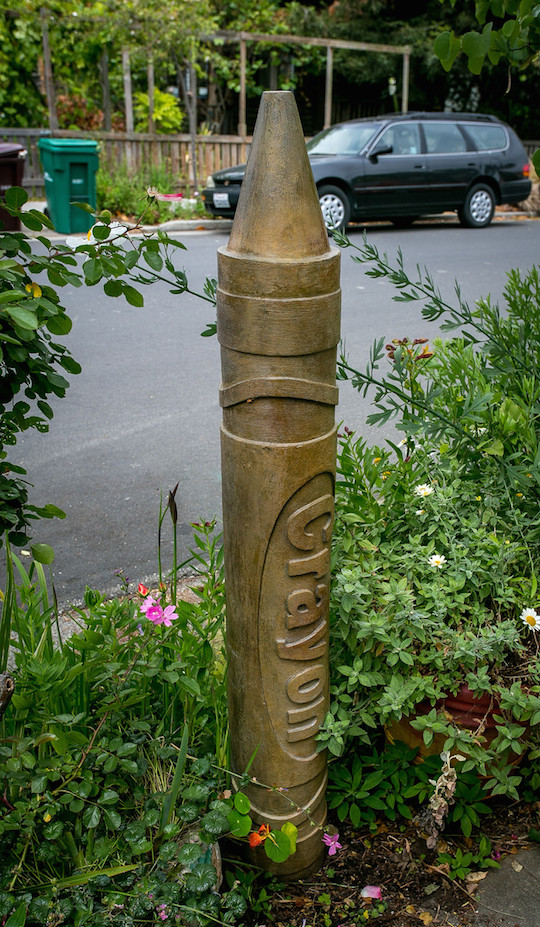
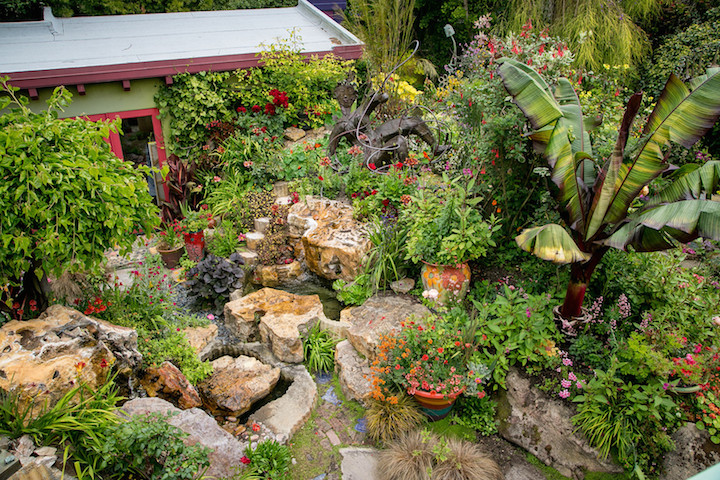
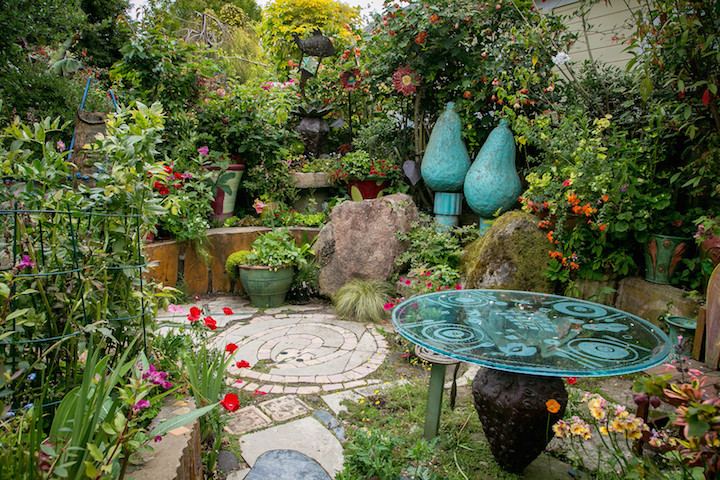
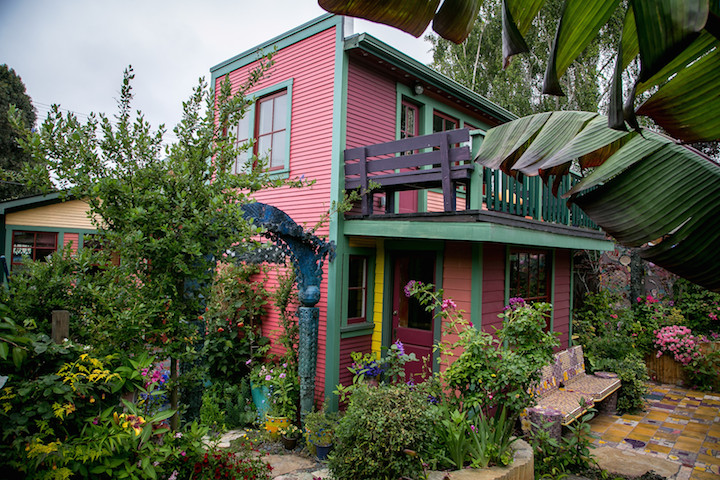
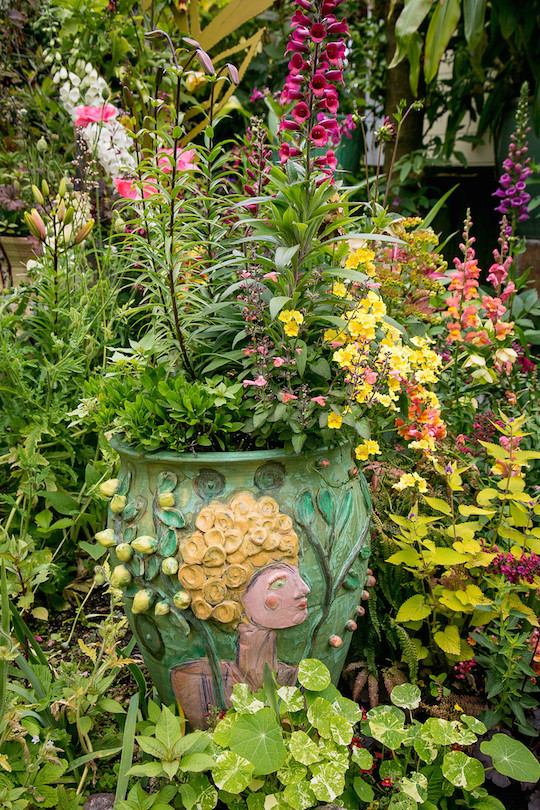
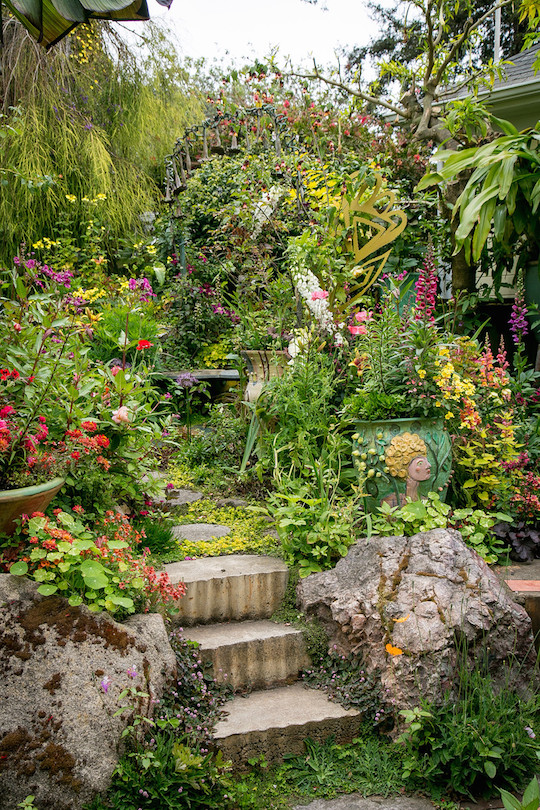
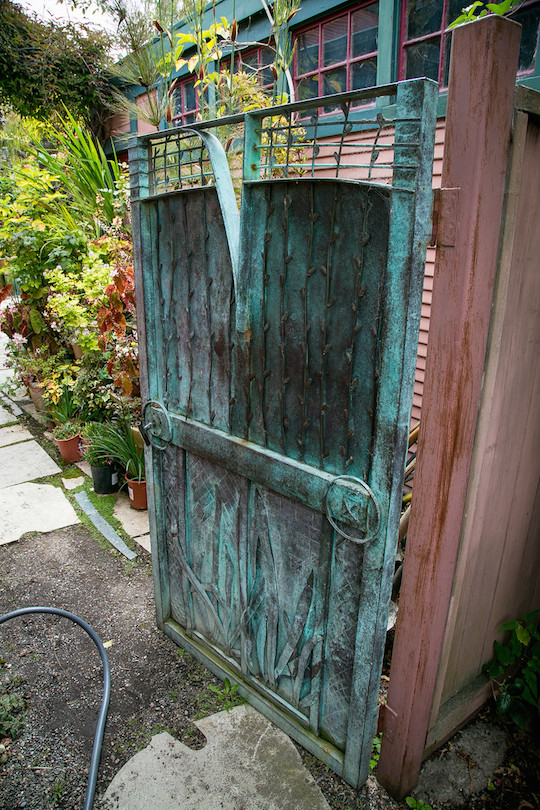
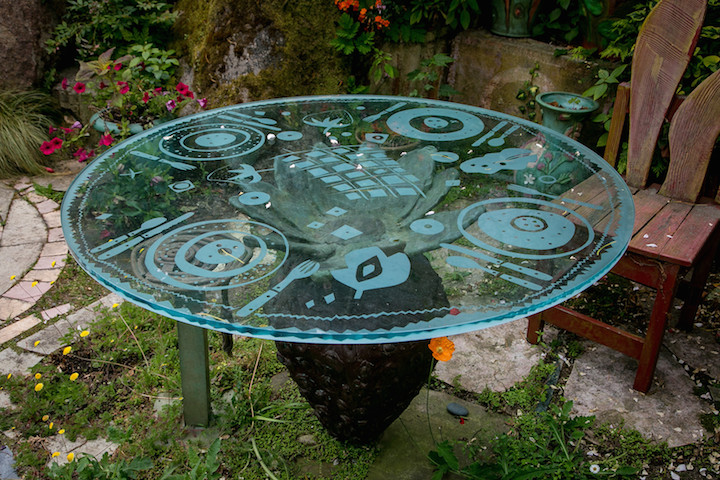
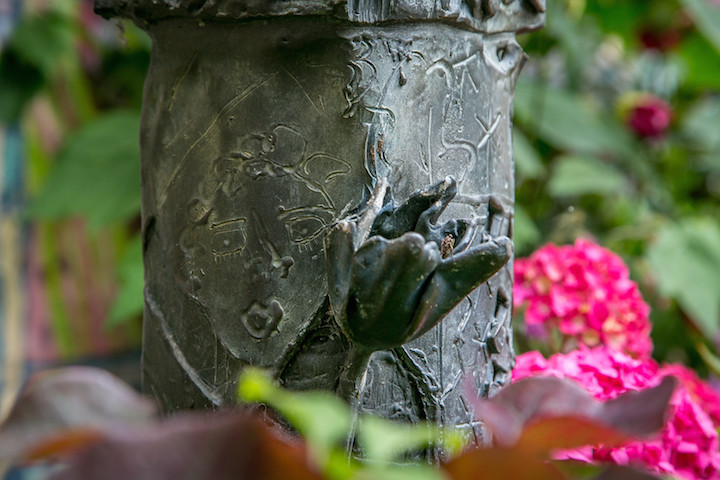
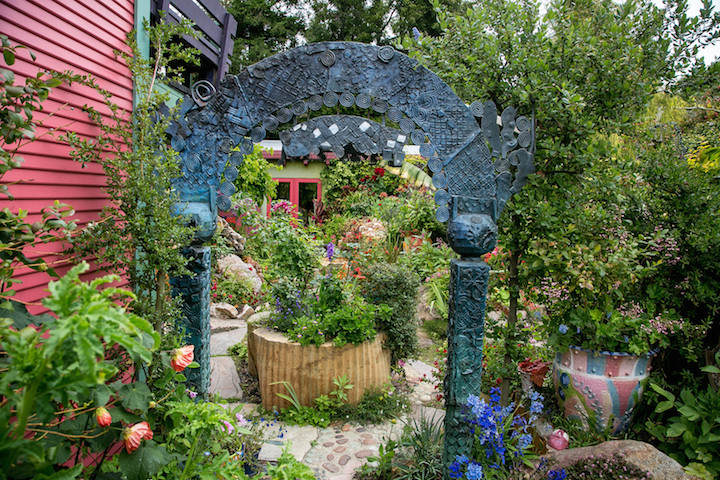
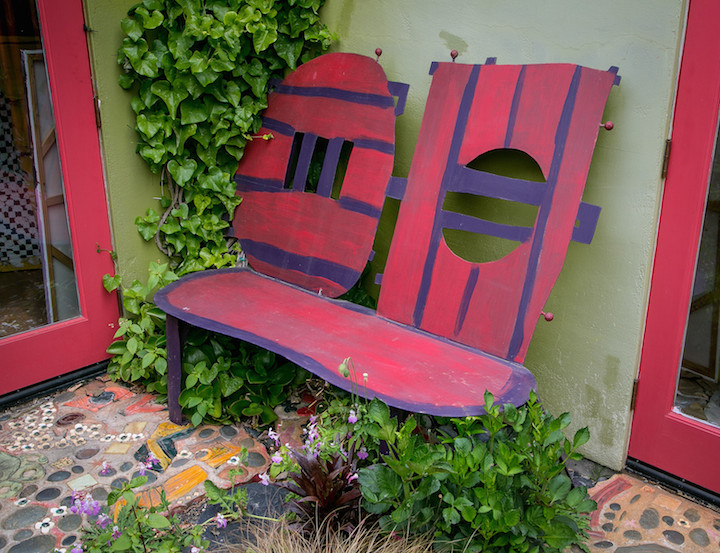
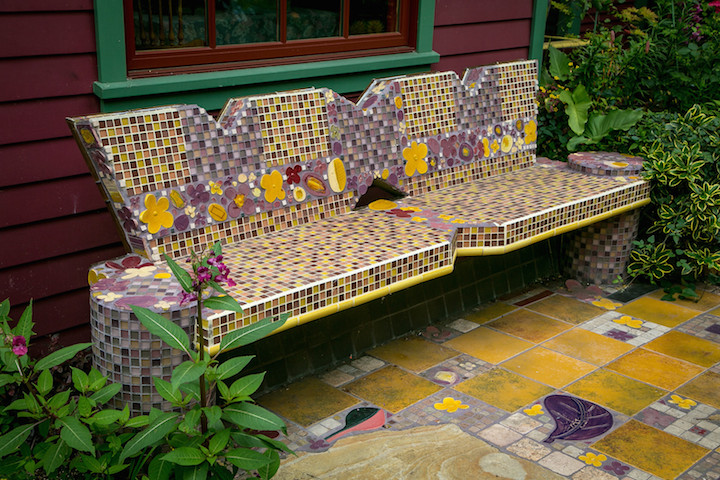
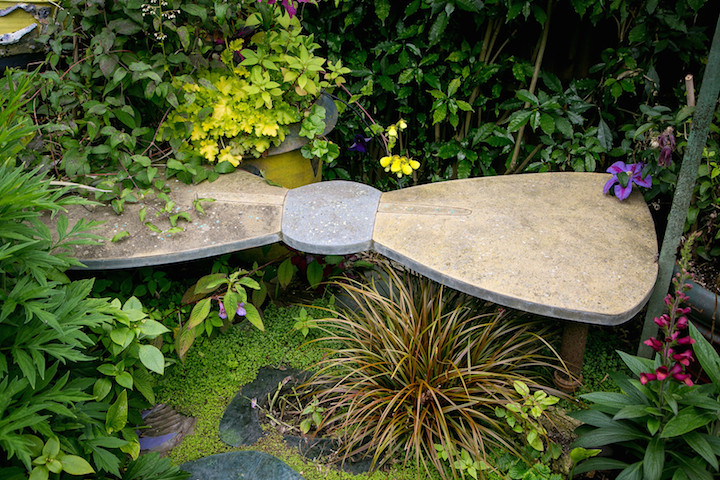
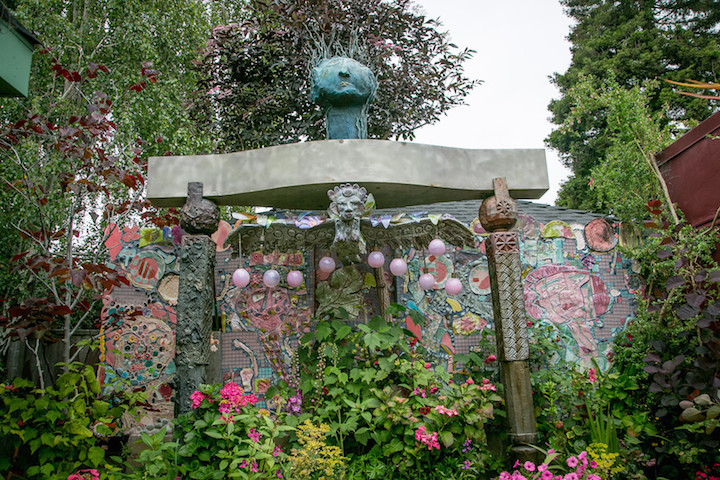
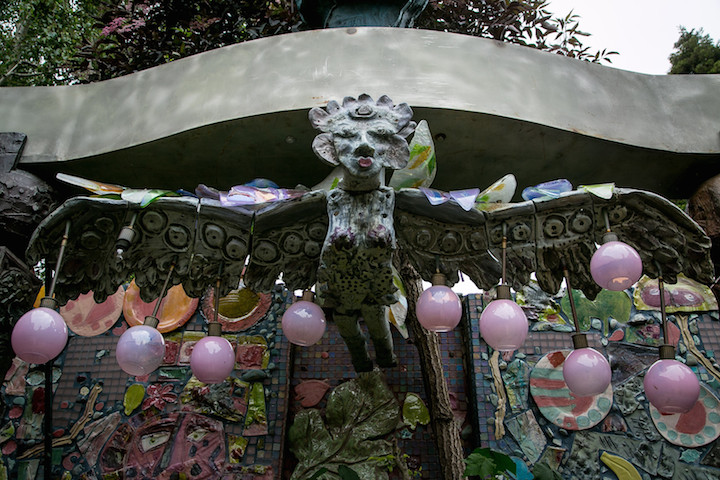
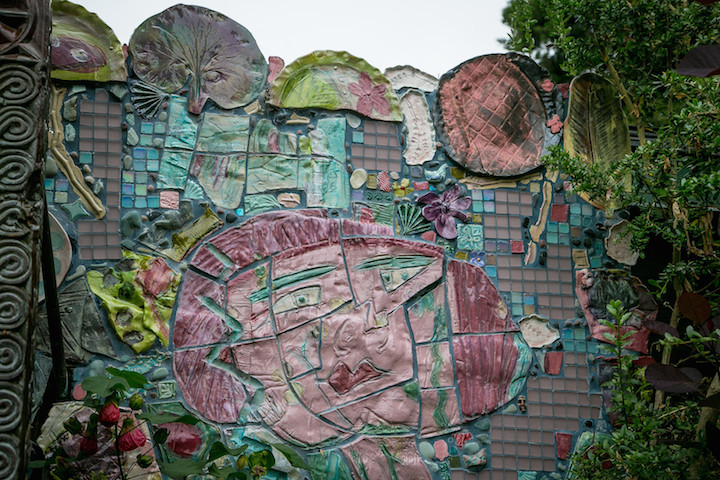
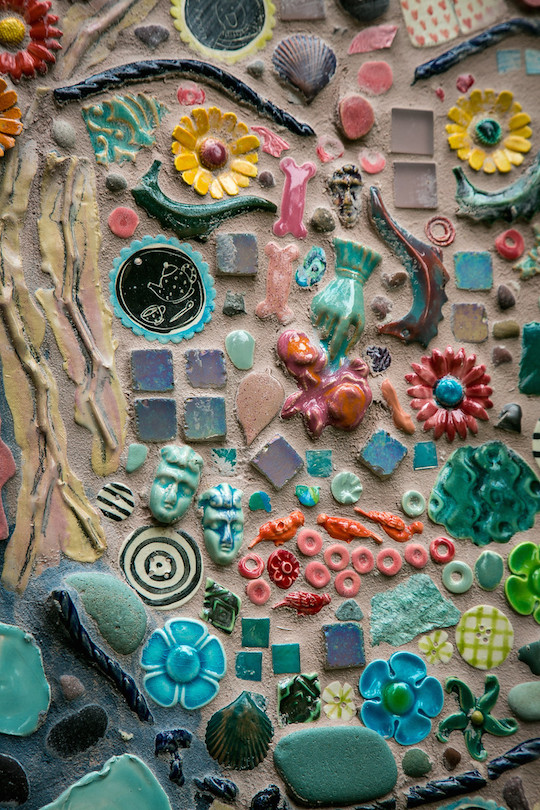
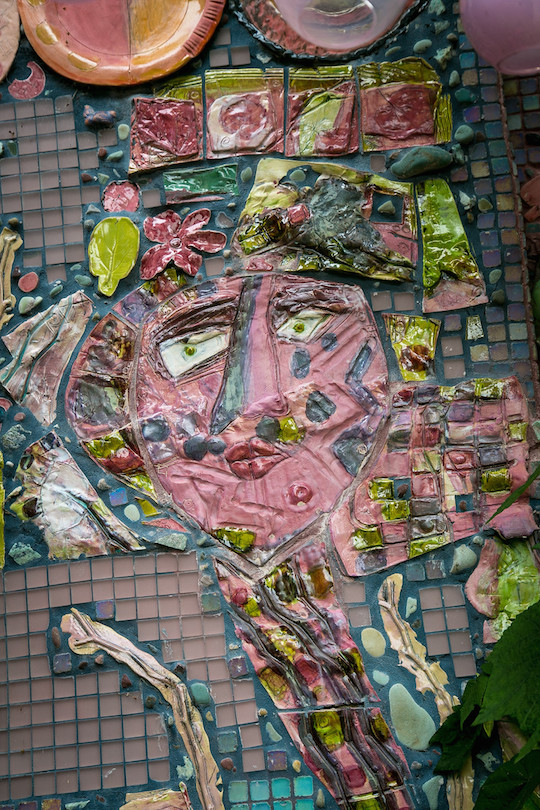
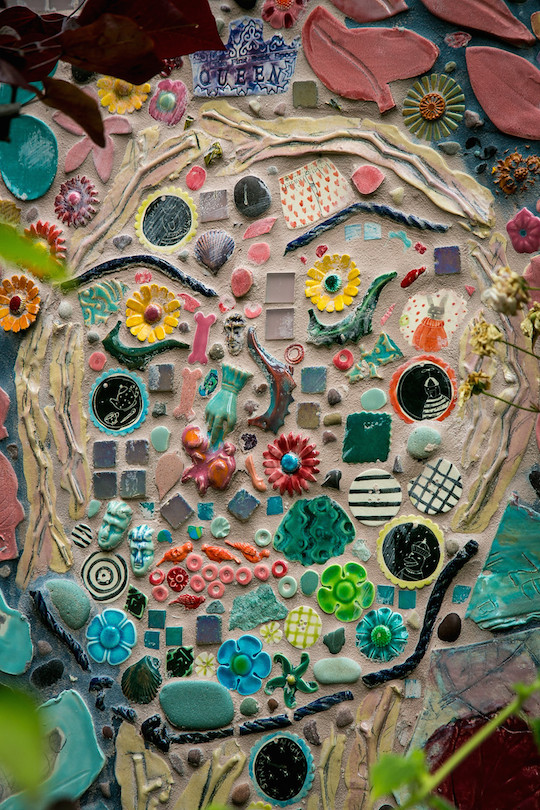
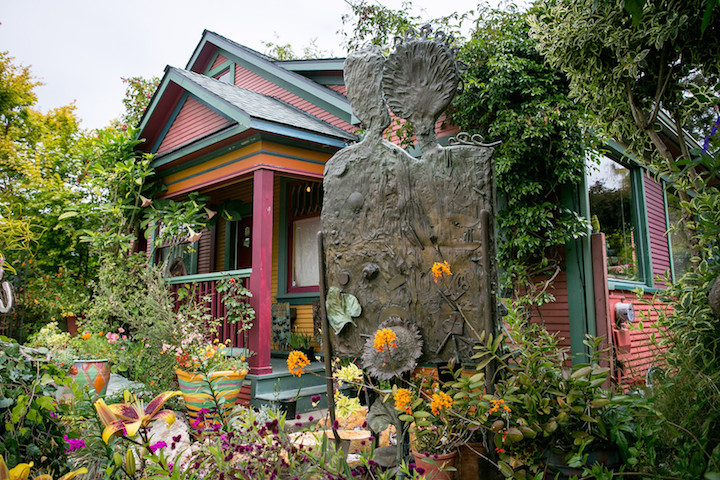
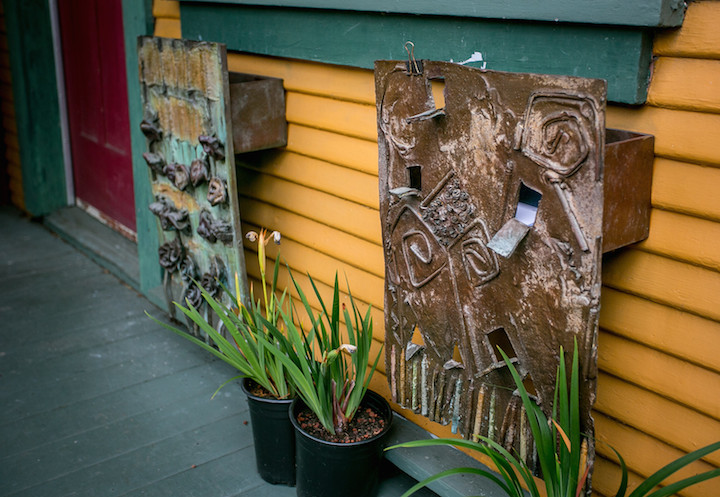

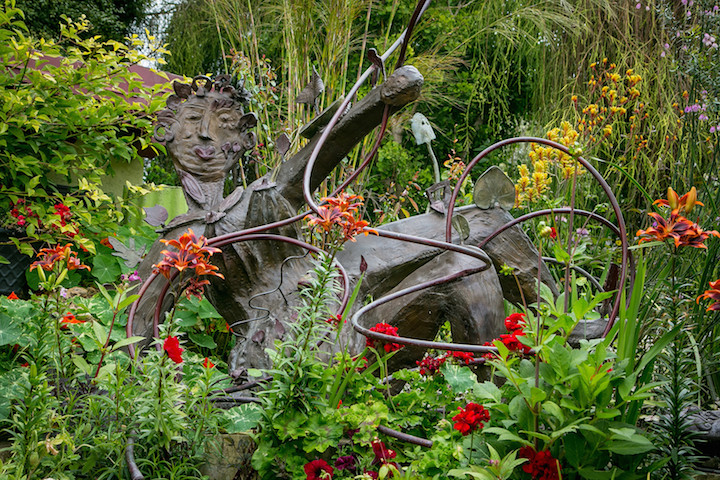
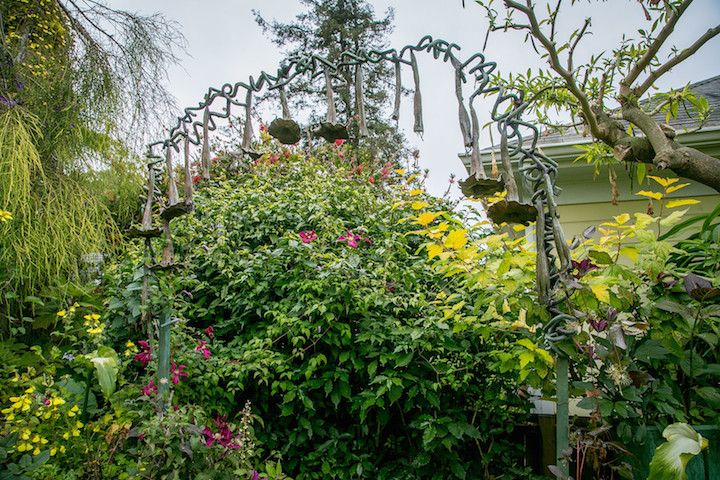
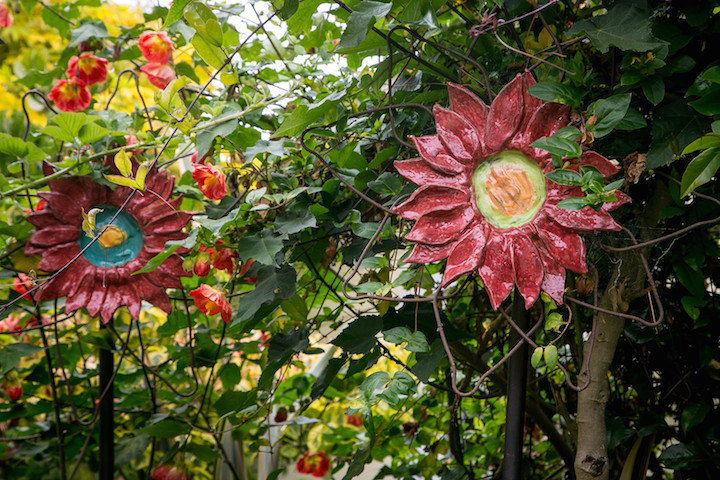
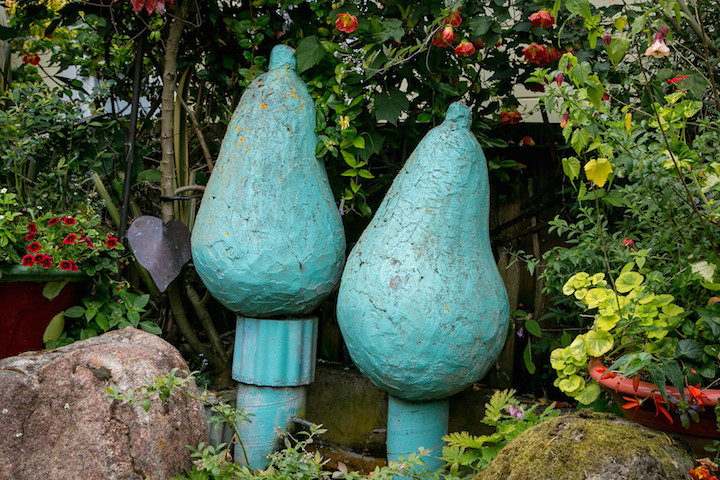
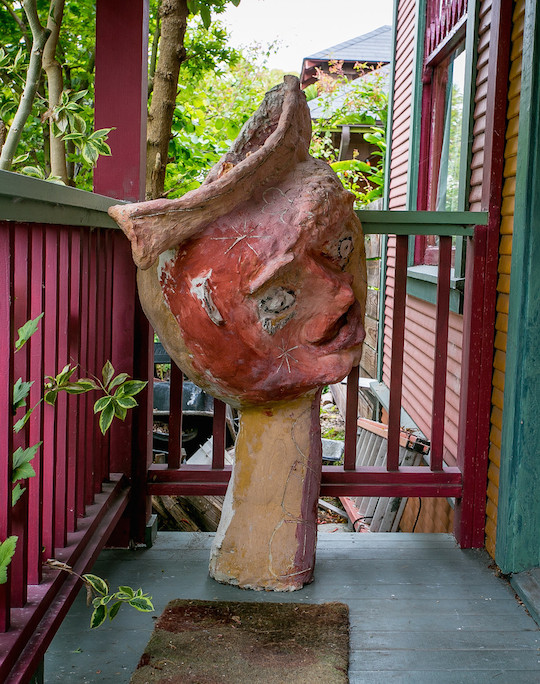
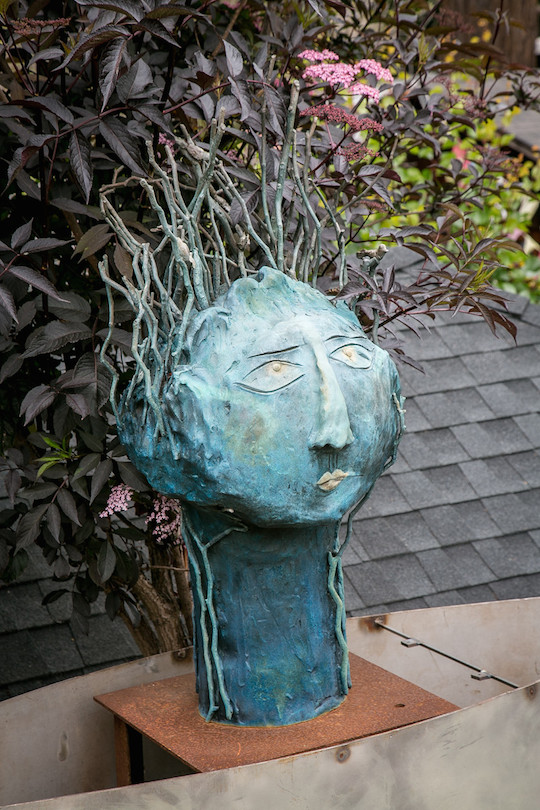
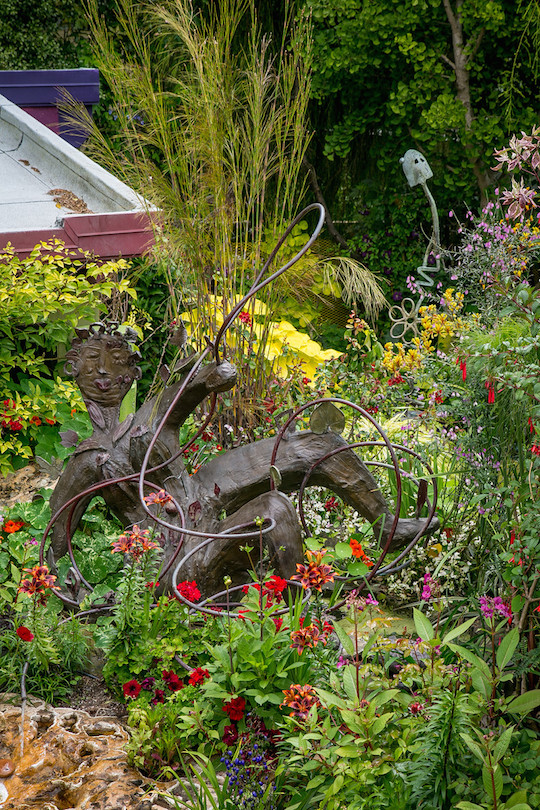
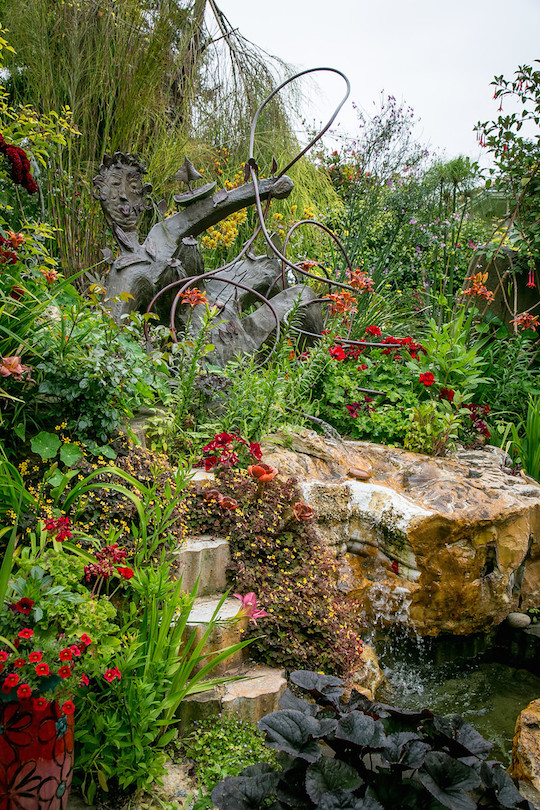
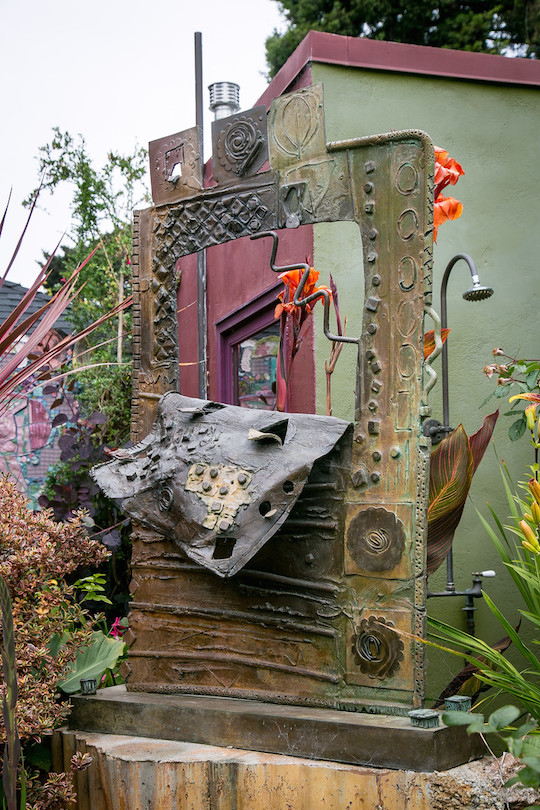
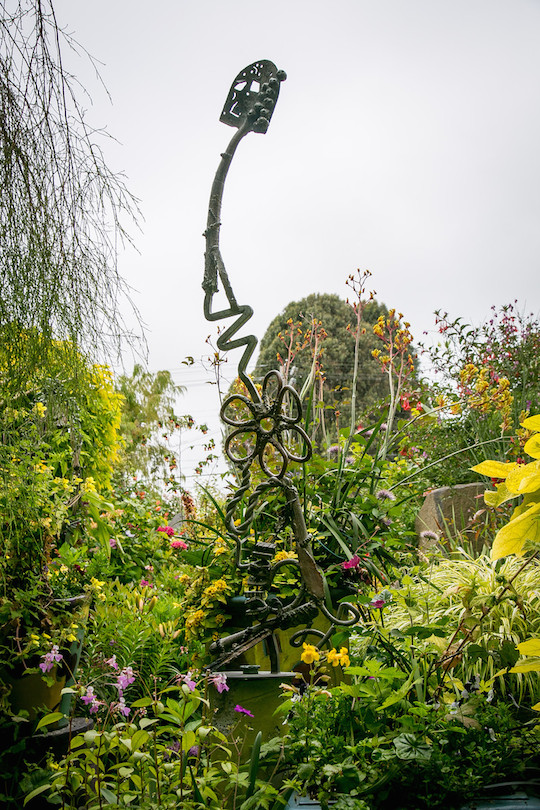
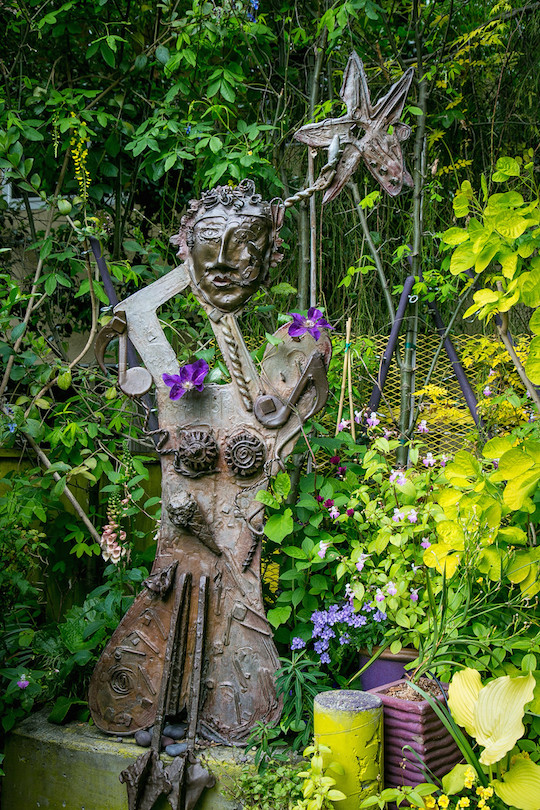
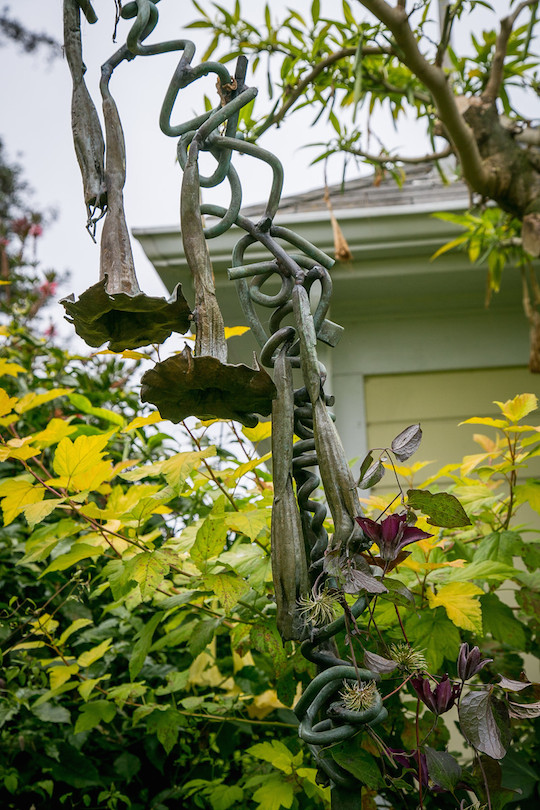
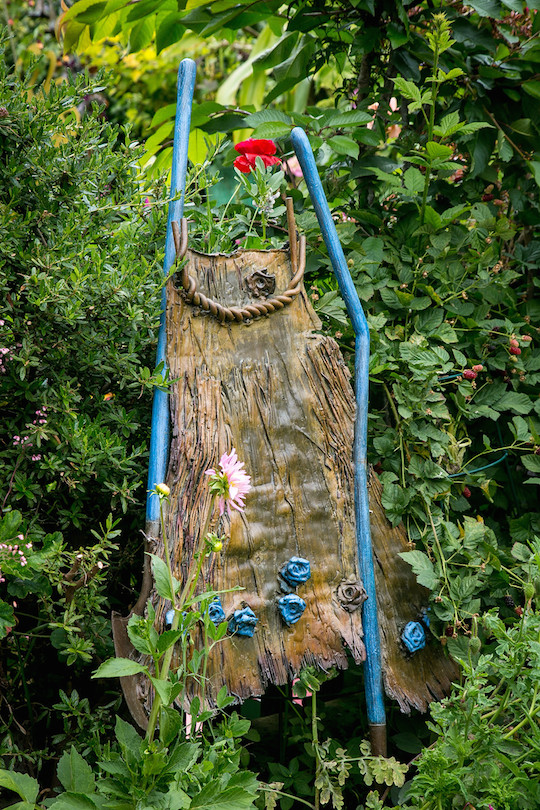
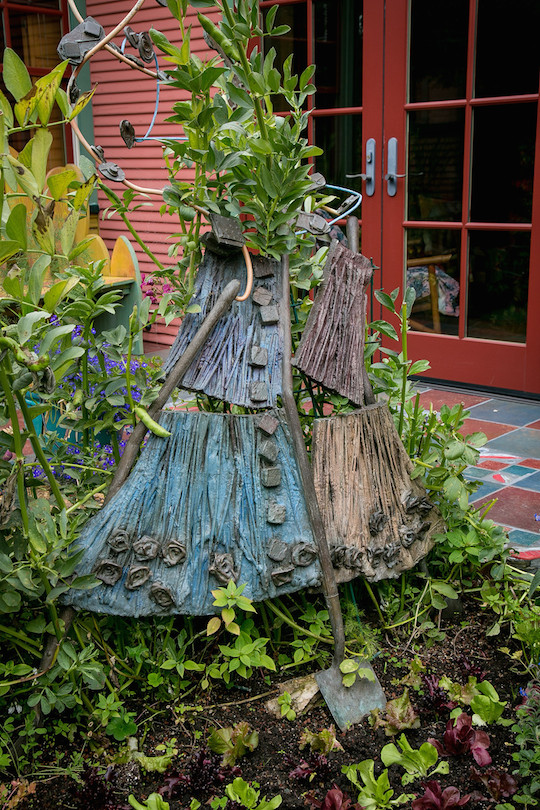
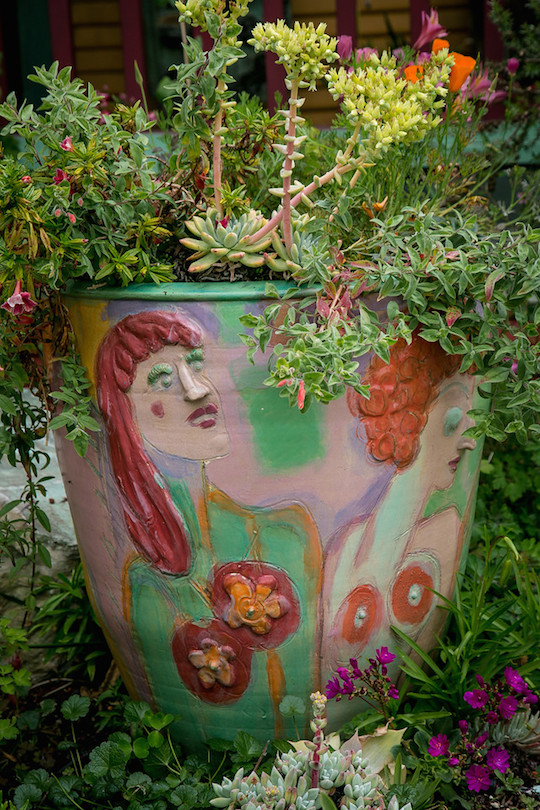
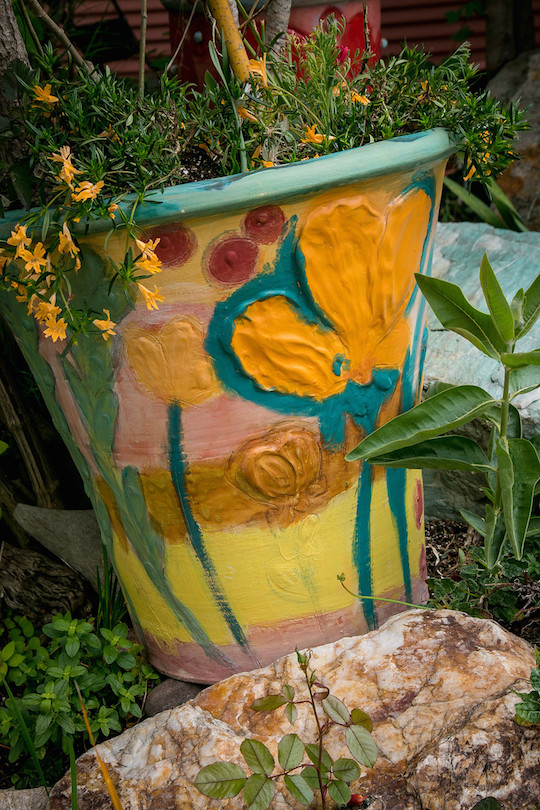
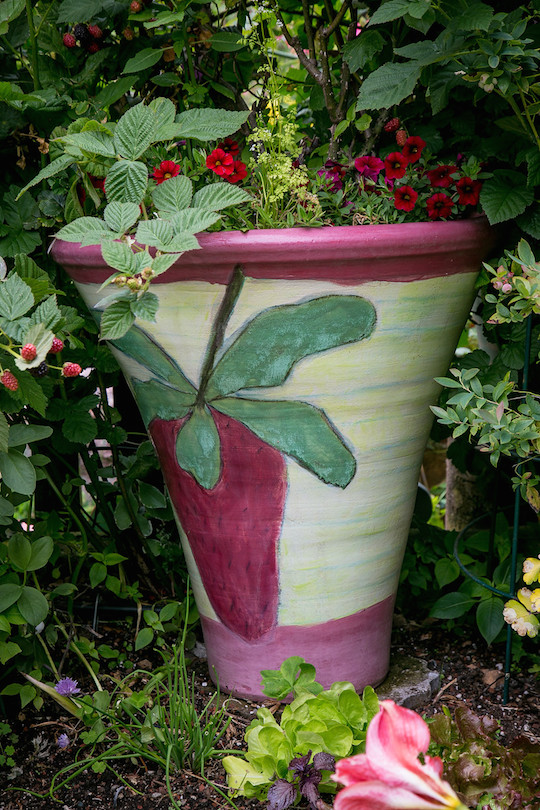
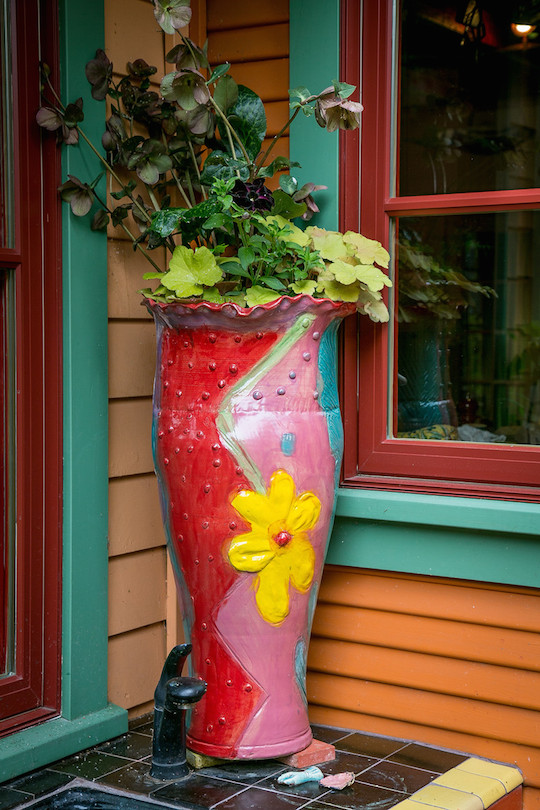
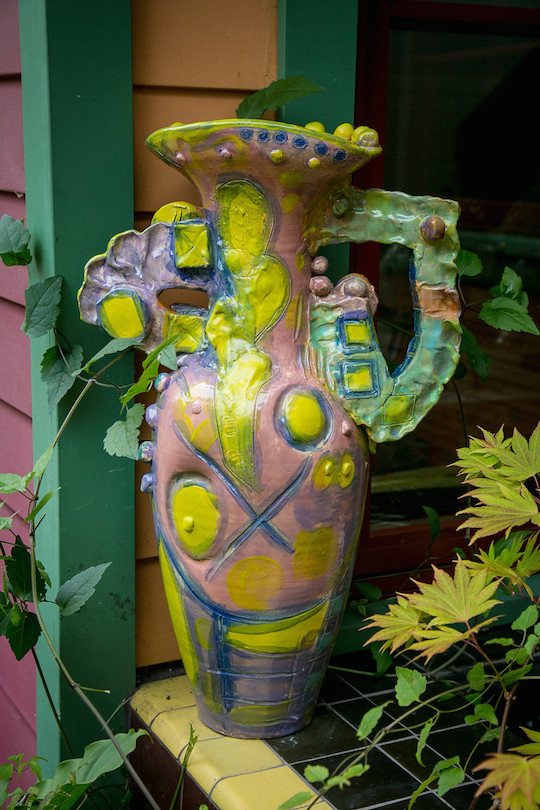
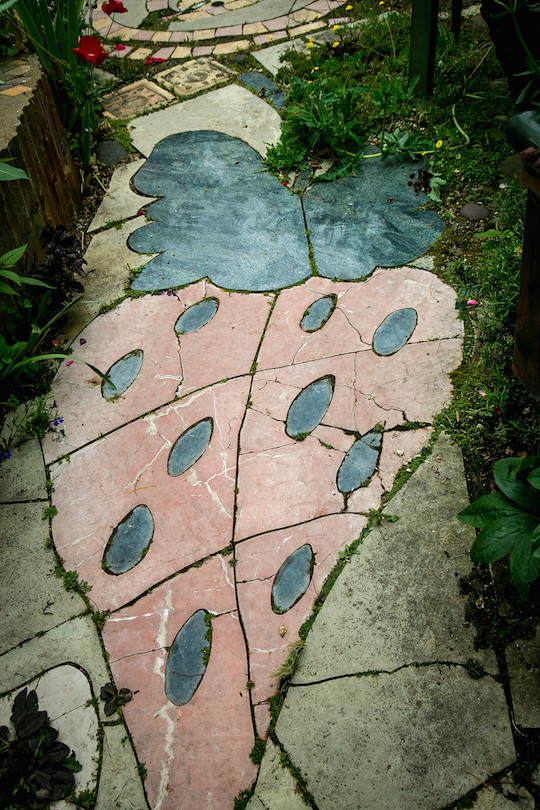
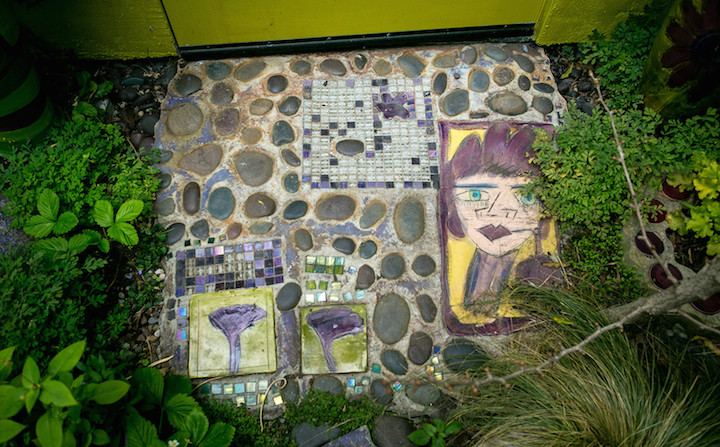
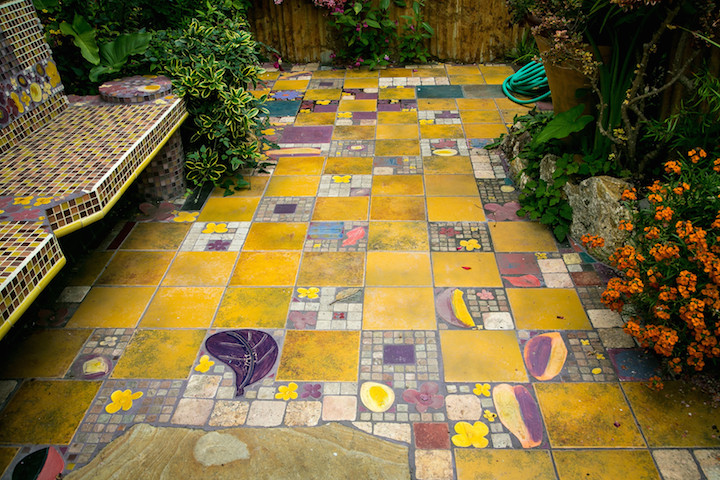
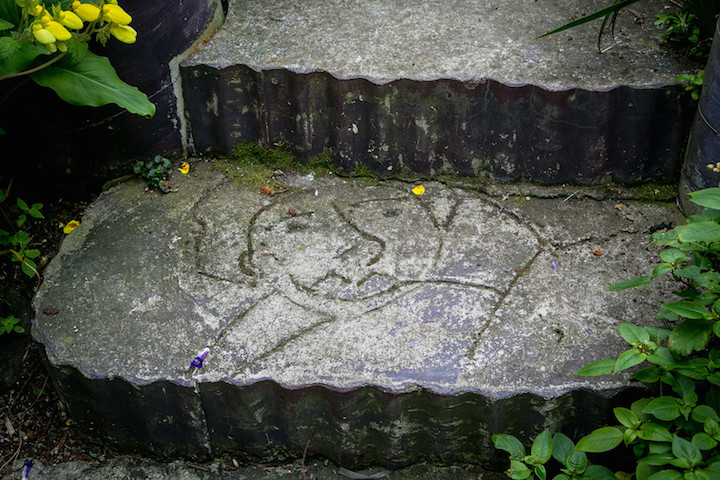
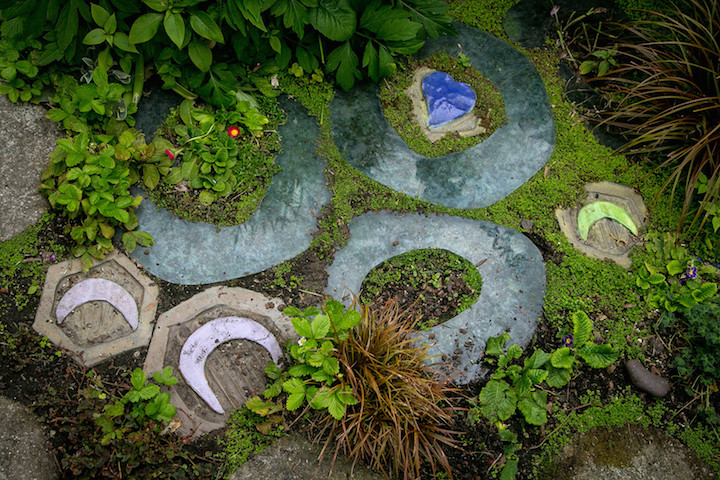
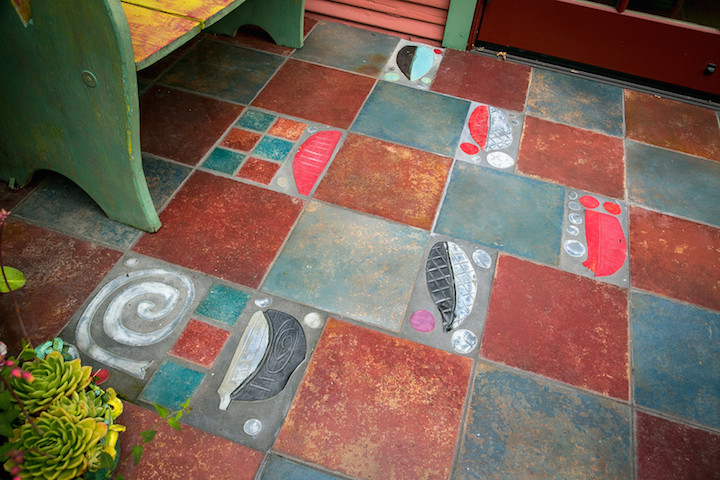
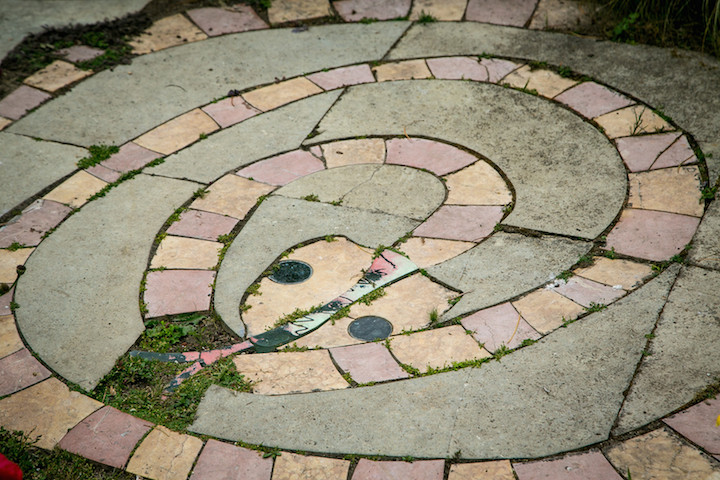
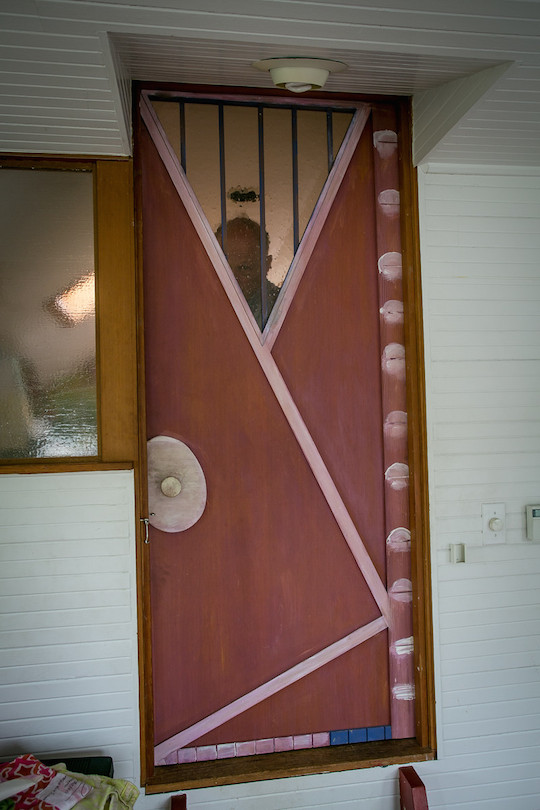
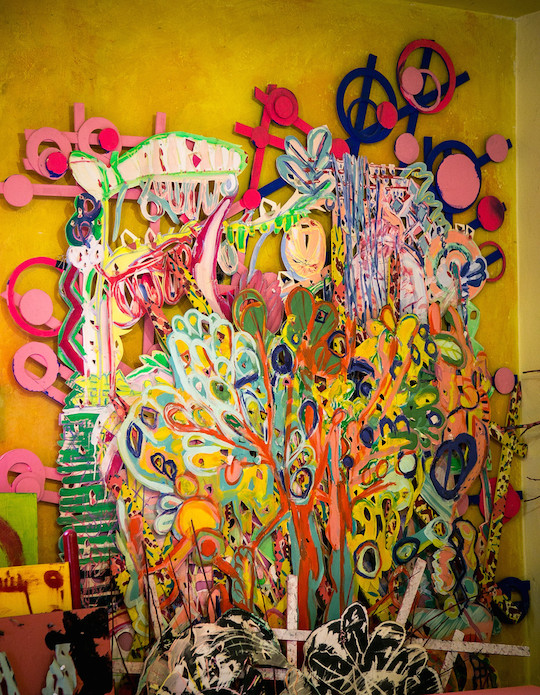
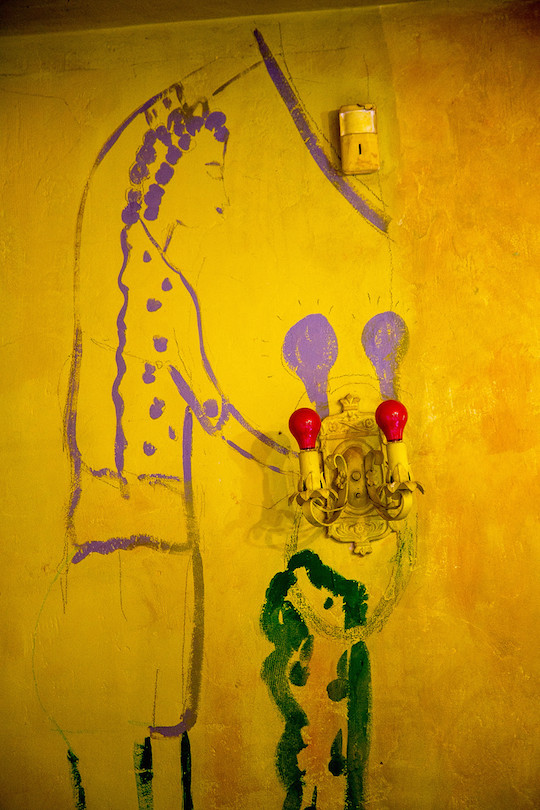
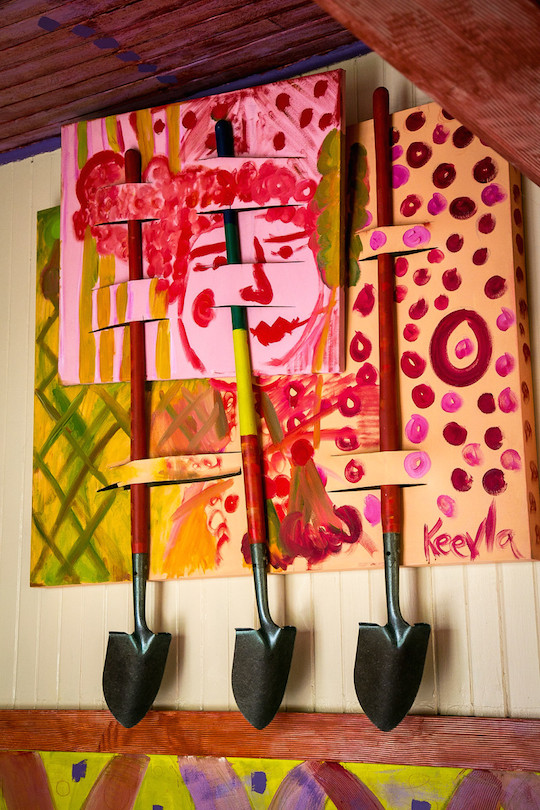
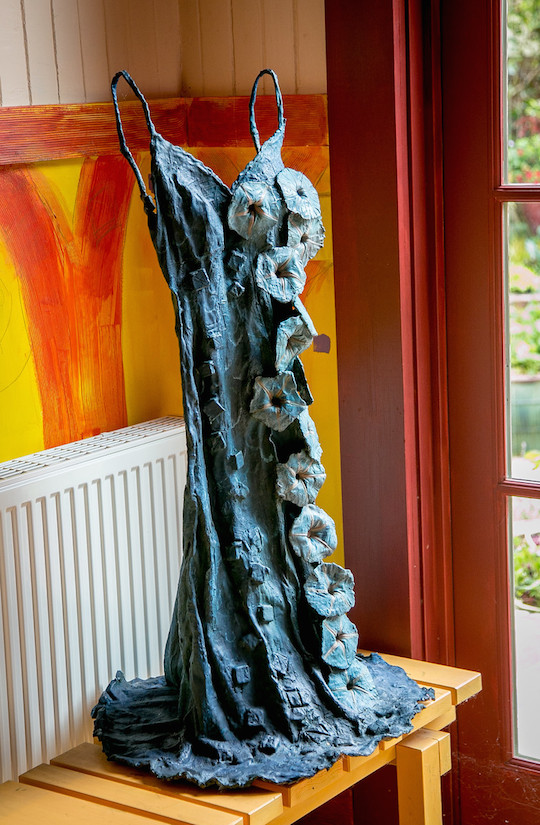
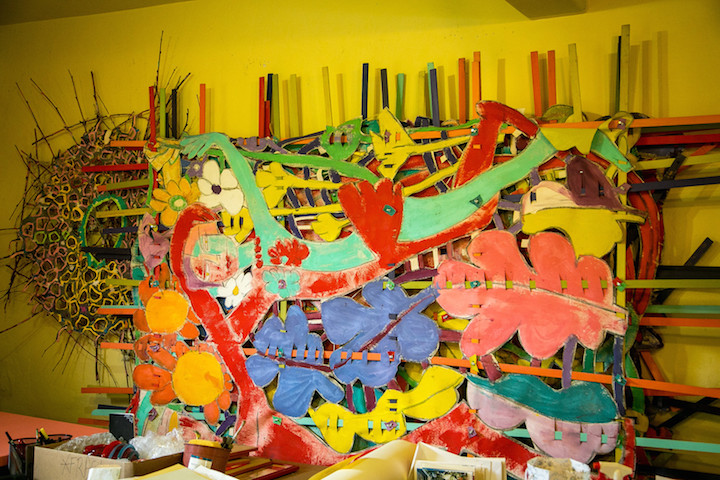

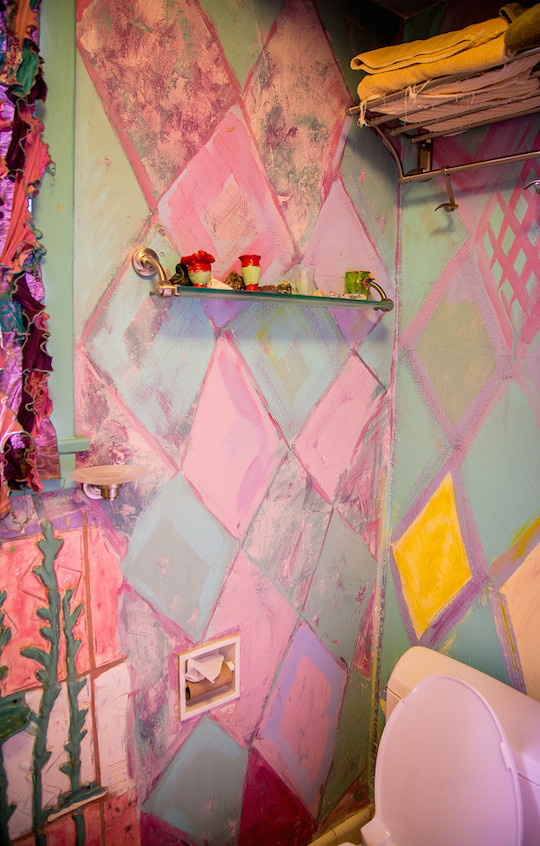
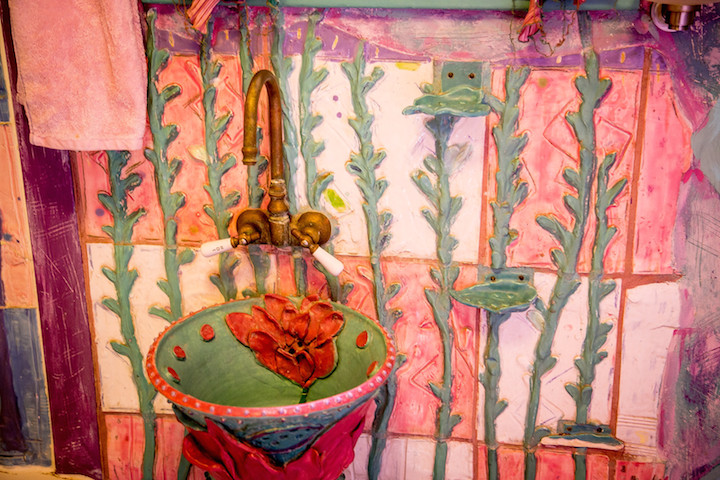
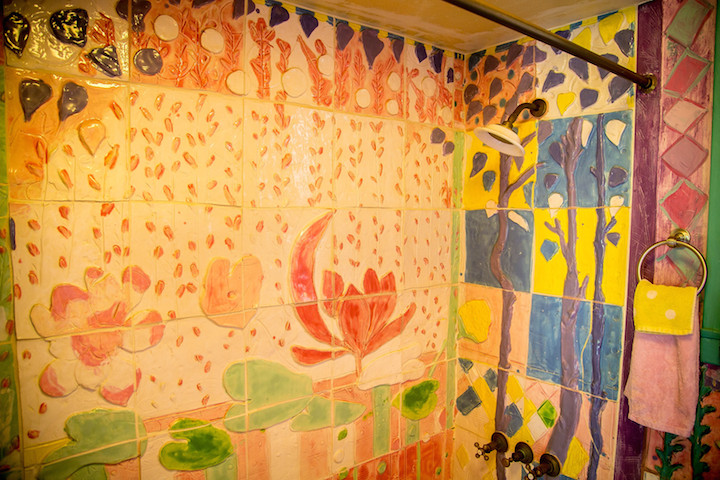

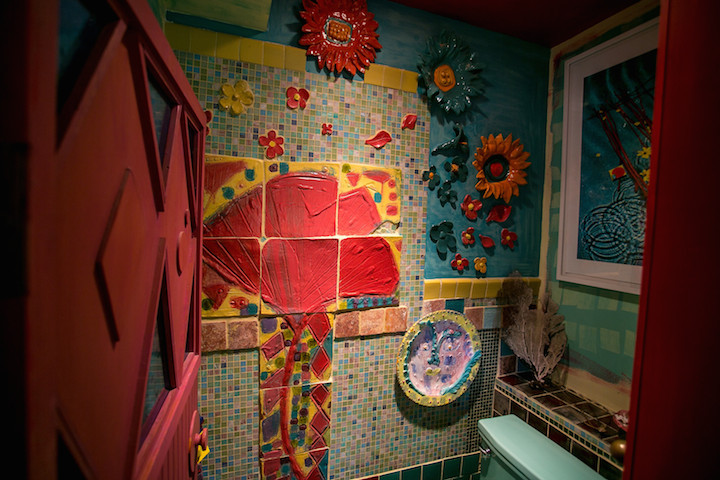
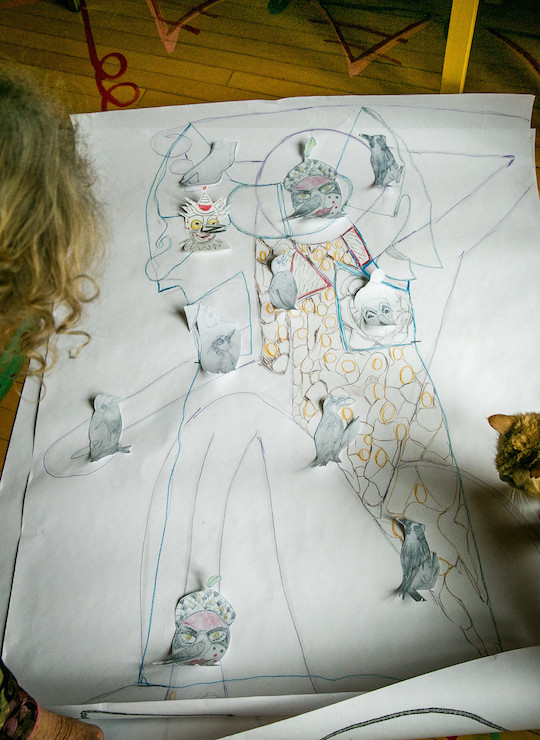

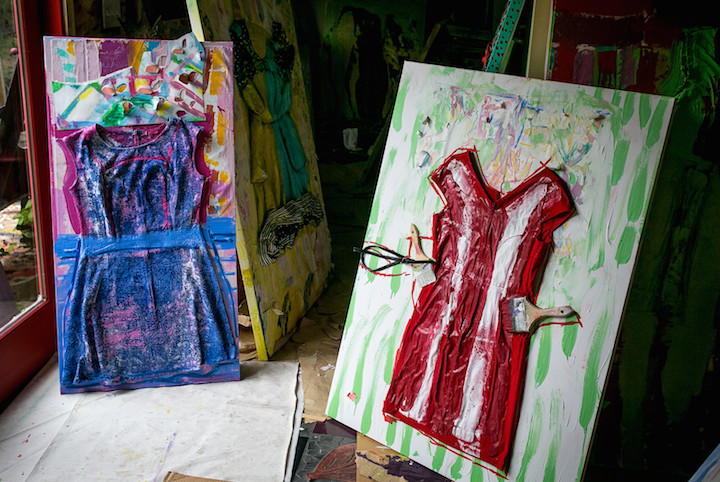
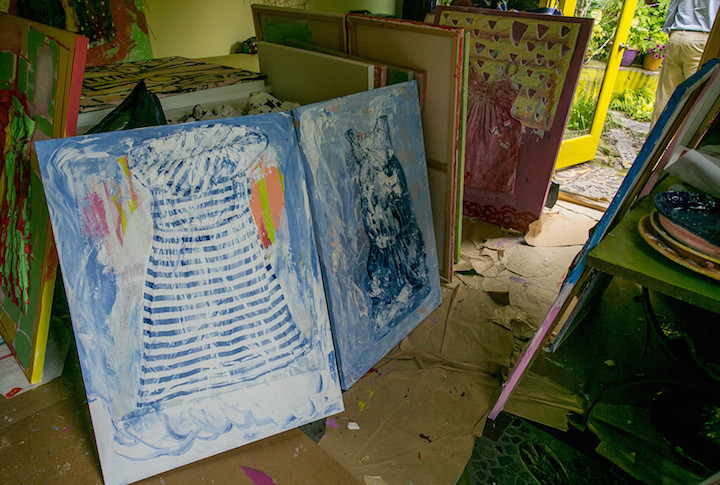
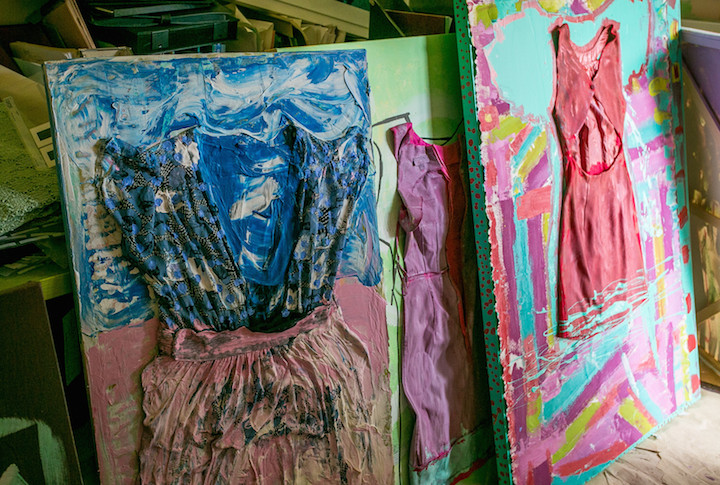

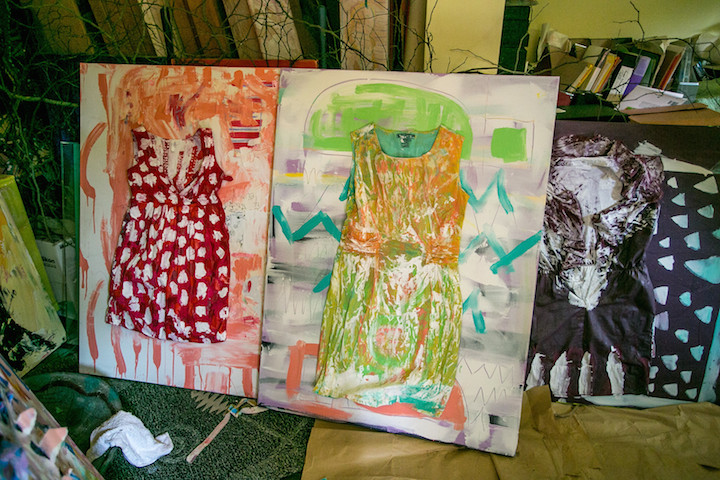
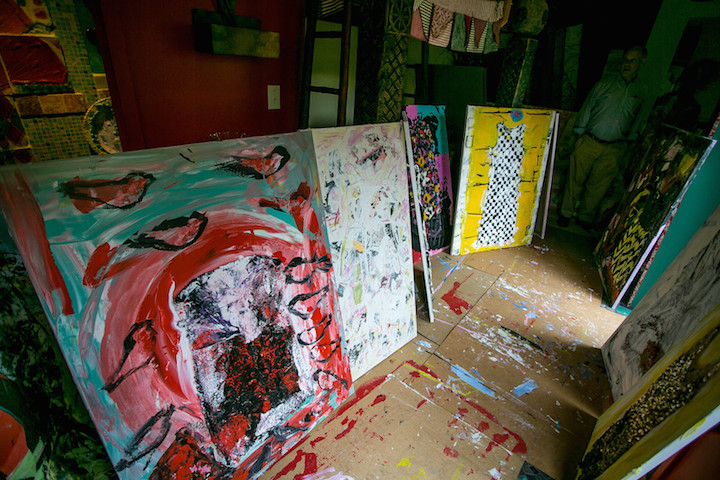
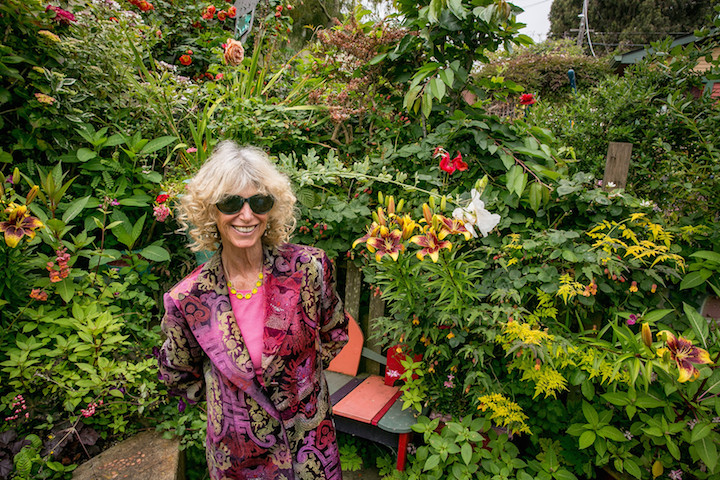

I can’t begin to say how much I love everything you do…is your yard art welding? What do you use on the flower pots? So interested in how you do the walkways…you are blessed indeed…Would love any info you can or would share with me…
…..just another yart lover!!!!!!